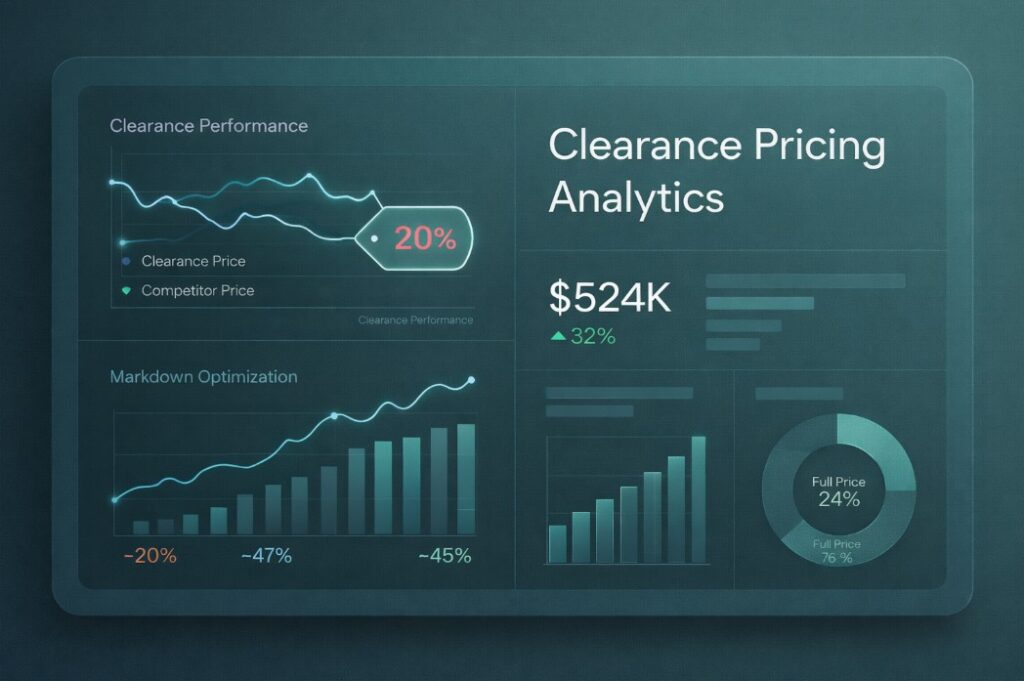- Product
- Solution for
For Your Industry
- Plans & Pricing
- Company
- Resources
For Your Industry
Pricing strategies are essential for any business aiming to maximize profits, maintain competitiveness, and adapt to changing market dynamics. As businesses grow and expand, developing an effective pricing strategy becomes a critical component of success. In this article, we’ll explore key pricing strategies that can help you optimize profit margins, attract more customers, and remain agile in the market.
This blog will provide practical insights into creating pricing strategies that not only drive profitability but also improve operational efficiency. By understanding how to price products more effectively, businesses can thrive in a competitive environment and maintain a competitive edge.

An effective pricing strategy is more than simply assigning a price to a product. It is a calculated method that balances cost, value, and market conditions to drive profitability. Price influences how customers perceive your brand, affects demand, and shapes the overall success of your business.
As market conditions fluctuate, businesses need to consistently assess and adjust their pricing strategies to stay relevant. It’s not uncommon for market prices to vary frequently, creating challenges for businesses trying to stay competitive while maintaining profitability. A robust pricing strategy can help you manage these fluctuations and capitalize on opportunities to boost sales and profits.
In this blog, we’ll walk you through practical tips for designing pricing strategies that enhance profit margins and improve your business’s bottom line.
One of the first steps in building an effective pricing strategy is to categorize your products based on profitability, demand, and competition. Grouping products allows businesses to apply more targeted pricing models that cater to different customer needs and market segments.
When developing a pricing strategy, it’s crucial to segment your products strategically. Here are a few key factors to consider:
Segmenting products helps businesses implement pricing strategies that optimize profitability based on market conditions, customer expectations, and competition.
Bundling is a highly effective pricing strategy that involves offering multiple products as a package at a discounted price. It incentivizes customers to purchase more while allowing businesses to improve their profit margins.
Bundling offers several advantages:
Consider bundling complementary products together to offer a complete solution to customers. For example, a laptop can be bundled with accessories like a mouse, external storage, or a laptop case. By offering these items together at a discounted price, customers perceive greater value while businesses increase their sales volume.
This pricing strategy works particularly well in industries such as electronics, software, and fashion, where customers are often looking for comprehensive solutions rather than individual products.
A successful pricing strategy must evolve over time to keep pace with changing market conditions, customer preferences, and competitor actions. Regularly reviewing and adjusting your pricing helps you maintain competitive pricing while protecting profit margins.
Dynamic pricing is an advanced pricing strategy where prices are adjusted in real-time based on market demand, competitor prices, and other external factors. It’s particularly effective for industries such as travel, e-commerce, and retail, where price fluctuations are common.
To ensure your pricing strategy remains profitable, conduct regular reviews of your profit margins and product performance. Some questions to consider:
These reviews help businesses fine-tune their pricing strategies and avoid pricing mistakes that erode profitability.
To create an effective pricing strategy, several key factors must be considered. These factors ensure that your pricing structure remains competitive and sustainable.
By integrating these factors, businesses can develop pricing strategies that enhance profitability while staying competitive.
Not all products benefit from dynamic pricing or advanced pricing strategies. Some items should be exempt from frequent price changes to maintain their perceived value and exclusivity.
Examples of products that may benefit from static or fixed pricing include:
Excluding certain products from dynamic pricing ensures that their value remains intact, enhancing your overall pricing strategy.
Regularly reviewing your pricing strategies ensures that they remain effective in a fast-paced market. As customer preferences change and competitors adjust their prices, businesses need to be nimble enough to adapt quickly.
By addressing these questions, businesses can ensure that their pricing strategies are optimized for profitability and aligned with market dynamics.
In today’s competitive marketplace, pricing strategies play a critical role in driving profitability, attracting customers, and maintaining a competitive edge. By understanding how to group products, leverage bundling, and dynamically adjust pricing over time, businesses can create pricing strategies that adapt to market conditions and maximize profit margins.
Whether you’re looking to implement dynamic pricing, bundle products for better value, or fine-tune your existing pricing model, continuously refining your pricing strategy ensures long-term success. A robust pricing strategy is essential for any business that wants to thrive in today’s fast-paced economy.
By applying these tips and regularly reviewing your pricing, you’ll be well on your way to crafting a successful, sustainable pricing strategy that drives profitability and growth for your business.













Missing an important marketplace?
Send us your request to add it!